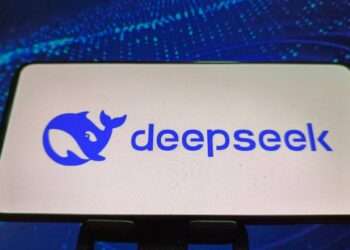Web 3.0 stands at the precipice of technological evolution, often shrouded in a mist of hype and high expectations. As we dissect the hype from reality, the realm where the metaverse, blockchain, and decentralized systems converge, it’s crucial to separate the wheat from the chaff. Web3 and the metaverse promise a future replete with decentralized governance, immersive experiences, and unparalleled autonomy. Yet, the question lingers – is this the dawn of a new digital epoch or merely a speculative bubble? This article aims to dissect the layers of excitement surrounding Web 3.0, sift through the jargon, and unveil the practical reality behind the buzzwords. We’ll explore the core components, address the skepticism, and highlight the tangible benefits, paving the way for a balanced understanding of Web 3.0’s potential. As we unpack the term “Web 3.0,” it’s essential to lean on credible insights, such as those from Twipe’s detailed examination and LinkedIn’s analysis on Web 3.0 in Fintech. These resources provide a foundation for our exploration, ensuring a well-rounded perspective dissecting the hype from reality.
Understanding Web 3.0
Web 3.0 represents the next phase of the internet’s evolution, promising a more autonomous and user-centric online ecosystem. At its core, Web 3.0 is characterized by decentralization, openness, and greater user utility. Blockchain technology, often cited as the backbone of Web 3.0, facilitates this shift by offering a decentralized ledger for transparent and secure transactions. As TechTarget elucidates, the integration of blockchain and the concept of a decentralized web are pivotal to understanding Web 3.0’s potential.
The Evolution from Web 1.0 and Web 2.0 to Web 3.0
The journey from Web 1.0, a static information provider, through Web 2.0, a dynamic and interactive experience, culminates in Web 3.0’s vision. Web 3.0 aims to create a semantic, intelligent web where machines understand data contextually and conceptually. This progression is not just a technological leap but a redefinition of how we interact online. For a more in-depth look at this evolution, LinkedIn’s article on Web 3.0 in Fintech provides valuable insights.

The Role of Blockchain, Decentralization, and the Semantic Web
Blockchain’s role in Web 3.0 cannot be overstated. It’s the technology that allows for decentralization, a key tenet of Web 3.0. Decentralization means moving away from centralized control and towards a distributed network, enhancing security and privacy. The semantic web, another pillar of Web 3.0, aims to make internet data machine-readable, paving the way for smarter and more intuitive user experiences. Gartner’s discussion on separating blockchain hype from reality provides a clear perspective on these technologies’ roles and future.
The Metaverse and Web3
The metaverse is often heralded as the future of online interaction, offering a virtual space where users can interact with a computer-generated environment and other users. It’s a concept that’s gaining traction alongside Web 3.0, as both aim to create more immersive and engaging online experiences. To understand how the metaverse might shape from hype to reality of our digital future, delve into Deloitte’s insights on how Web3 and the metaverse are shaping a new application layer for the internet.
How the Metaverse and Web3 are Interconnected
The metaverse and Web3 share a symbiotic relationship. Web3’s decentralized, user-empowered ethos could provide the infrastructure needed for a truly open and interoperable metaverse. This interconnection promises a future where digital identities, assets, and experiences move seamlessly between virtual worlds. McKinsey’s article on the potential of Web3 provides a comprehensive look at how these technologies might interplay.
Potential Impact on Digital Interaction and Virtual Environments
The convergence of the metaverse and Web 3.0 has the potential to revolutionize digital interaction, making virtual environments more immersive, secure, and user-centric. It’s a shift that could redefine online communities, commerce, and creativity, offering unprecedented opportunities for engagement and innovation. For a glimpse into the future of these interactive spaces, consider the examples provided in TechTarget’s article on top Web 3.0 use cases and examples.

Hype Versus Reality
The discussion surrounding Web 3.0 is often polarized between unbridled optimism and cautious skepticism. To truly understand and appreciate the potential of Web 3.0, it’s essential to navigate this terrain by separating the tangible developments from speculative hype. This section aims to critically analyze the claims, expectations, and practical applications of Web 3.0, providing a balanced perspective on what’s genuinely achievable in the near future.
Analyzing the Current State of Web 3.0 and the Surrounding Hype
The hype around Web 3.0 can sometimes overshadow its actual state of development. While it’s heralded as the next significant leap in the digital age, it’s crucial to assess where it currently stands. What aspects of Web 3.0 are already in place, and what are merely theoretical or in early developmental stages? For a grounded analysis, LinkedIn’s pulse on Web 3.0 provides insights into what’s fact and what’s fiction.
Case Studies and Examples of Web 3.0 Applications
To move beyond the rhetoric, it’s helpful to look at practical examples and case studies where Web 3.0 concepts have been successfully implemented. From decentralized finance (DeFi) platforms to NFT marketplaces and beyond, real-world applications provide a window into the potential and limitations of Web 3.0. For instance, examining how TechTarget outlines various use cases can offer a more concrete understanding of Web 3.0’s capabilities and impact.
Separating Realistic Expectations from Speculative Visions
While it’s exciting to ponder the revolutionary possibilities of Web 3.0, it’s equally important to maintain realistic expectations. Distinguishing between what Web 3.0 can likely achieve in the short term versus long-term speculative visions can help in setting appropriate strategies and avoiding disappointments. Articles like those from Twipe shed light on separating the tangible from the aspirational in the realm of Web 3.0.

The Real-World Implications of Web 3.0
As the theoretical aspects of Web 3.0 begin to crystallize into tangible applications, it’s crucial to examine its real-world implications. This exploration is not just about understanding the technology itself but also about grasping the changes it brings to business models, governance, and daily life. Here, we’ll dive into how Web 3.0 is already beginning to reshape industries and what it means for the future of digital interaction.
How Businesses and Industries are Adopting Web 3.0 Technologies
Various sectors are already harnessing the power of Web 3.0 technologies to revolutionize their operations. From finance and healthcare to entertainment and beyond, businesses are exploring how blockchain, decentralization, and enhanced user autonomy can offer competitive advantages. For instance, McKinsey’s insights into the potential of Web3 offer a deep dive into how different industries are navigating this shift.
Benefits and Challenges of Integrating Web 3.0
Adopting Web 3.0 comes with a set of benefits and challenges. On one hand, there’s the promise of increased security, transparency, and user empowerment. On the other, issues like technological complexity, regulatory uncertainty, and the digital divide pose significant hurdles. Understanding these pros and cons is crucial for anyone looking to navigate this space effectively. Deloitte’s examination of Web3 and the metaverse offers a balanced view of these considerations.
Future Outlook: What’s Feasible and What’s Far-Fetched?

As we look to the future, it’s essential to discern between the feasible short-term advancements and the more far-fetched long-term predictions. While certain aspects of Web 3.0 are likely to become mainstream soon, others may remain on the horizon for years to come. Articles like those from Gartner help in understanding these timelines and setting realistic expectations for the evolution of Web 3.0.
Preparing for the Web 3.0 Era
As the Web 3.0 landscape continues to evolve, it’s imperative for individuals and organizations alike to prepare for the shifts it will bring. This preparation goes beyond mere technical readiness; it encompasses understanding the new digital ethos, adapting to evolving business models, and rethinking the ways we interact online. In this section, we’ll explore strategies, resources, and considerations that are crucial for effectively navigating and leveraging the opportunities presented by Web 3.0.
Strategies for Individuals and Businesses to Adapt to Web 3.0
Adapting to Web 3.0 requires a proactive approach, whether you’re an individual looking to stay ahead of the curve or a business aiming to leverage new opportunities. Strategies might include investing in continuous learning, reevaluating digital assets and services, and exploring partnerships within the Web 3.0 ecosystem. For insights into strategic adaptation, consider the perspectives offered by Deloitte’s analysis on how leaders can understand and engage with this new digital landscape.
Learning and Development Resources
Staying informed and educated is critical in a landscape as dynamic and complex as Web 3.0. This involves not only understanding the technology itself but also grasping the broader implications for privacy, security, and governance. Resources range from online courses and webinars to community forums and academic research. For a comprehensive guide to Web 3.0 learning resources, TechTarget’s detailed guide on Web 3.0 use cases and examples can be a great starting point.
Ethical Considerations and the Need for Regulation

As with any significant technological advancement, Web 3.0 raises important ethical questions and regulatory considerations. Issues around data privacy, digital identity, and equitable access are just the tip of the iceberg. Navigating these challenges requires a thoughtful approach, balancing innovation with responsibility. Gartner’s discussion on separating blockchain hype from reality touches upon some of these ethical and regulatory aspects.
Conclusion
As we’ve navigated through the intricate landscape of Web 3.0, it’s evident that while it brings groundbreaking potential, it also carries its share of challenges and misconceptions. From the evolution of the internet to the burgeoning possibilities of the metaverse, the journey of Web 3.0 is as exciting as it is complex. This exploration has underscored the importance of a balanced perspective — recognizing the transformative potential of Web 3.0 while staying grounded in its current realities.
As Web 3.0 continues to evolve, it beckons us to be both enthusiastic adopters and critical thinkers. The key is to remain informed, adaptable, and proactive in embracing this new digital era. Whether you’re an individual, a business leader, or a tech enthusiast, the time to engage with Web 3.0 is now — to learn, to experiment, and to prepare for a future that promises to redefine our digital interactions.
Consider reading best of our articles:
- 🌐 For insights into the future of technology, don’t miss our deep dive into Werner Vogels’ Tech Predictions for 2023.
- 💧 Explore the intersection of health and innovation in The Power of Water: Harnessing its Benefits for Optimal Human Health.
- ⚽ For sports enthusiasts, stay ahead with Premier League transfer news featuring Cristiano Ronaldo and top clubs.
- ⚓️ Dive into the world of coding with Command Line: Mastering Bash Scripting for Linux Beginners.
- 🌐 Curious about next-gen gaming consoles? Find out in When Does The PS6 Come Out? Beyond The Powerful PS5.
This journey through the realms of Web 3.0, its hype from reality, and future prospects offers just a glimpse into the dynamic world of technology and innovation. For more engaging and insightful content, our recommended reads are a perfect next step.










































